Fire Fighter Dies After Being Run Over by Ladder Truck While Attempting to Board - Alabama
 Death in the Line of Duty…A summary of a NIOSH fire fighter fatality investigation
Death in the Line of Duty…A summary of a NIOSH fire fighter fatality investigation
F2000-41 Date Released: May 10, 2001
SUMMARY
On September 27, 2000, a 33-year-old male career fire fighter (the victim) died after attempting to board Ladder Truck 5. At 1808 hours, the fire department was dispatched to a motor-vehicle incident involving two vehicles, with injuries and a possible entrapment. The Captain on duty was outside the station when the driver, along with a fire fighter and the victim, proceeded to the bay area of the station. The driver stopped and looked quickly at the map board, and then made his way to the truck. The fire fighter and the victim walked towards the rear of the truck. The fire fighter told the victim that he would run to the back of the station to alert the Captain of the call. The driver got in and started the truck, then activated the lights and sounded the air horns to let the Captain know that the truck was ready to leave. At 1809 hours, the driver radioed to Central Dispatch that Truck 5 was responding to the call. The fire fighter donned some of his gear and boarded the jump seat, facing forward on the Captain’s side. The Captain boarded the truck and the driver stated that he had heard both jump-seat doors close. He checked his rear view mirrors and both of the jump-seat doors were in the closed position. At approximately 1810 hours the truck exited the bay area of the station with lights and sirens activated. The truck moved down the station’s driveway apron and paused briefly to wait for traffic heading westbound to yield for the truck. The truck crossed over the three westbound traffic lanes and made a left turn. Note: According to several civilian witnesses’ statements, during this time the victim was running beside the driver’s side jump-seat door while trying to catch up to the truck. The truck continued to travel in an inside turning lane, heading eastbound. The truck began to accelerate as it was straightening out from making the left turn. With the turning lane ending at an intersection, the driver looked in the rear view mirror on the Captain’s side and made a right turn to merge into the center lane of traffic at the intersection. As the truck approached the intersection all three personnel on the truck felt a “thump.” Upon checking both mirrors the driver saw the victim lying on the ground. The driver told the Captain that the victim had fallen out of the truck. At 1811 hours, the Captain radioed to Central Dispatch to request assistance be dispatched to his location for an injured fire fighter. The victim had been run over by wheels of the truck and sustained fatal injuries as a result.
NIOSH investigators concluded that, to minimize the risk of similar occurrences, fire departments should
- ensure that fire fighters do not attempt to board moving fire and emergency apparatus
- ensure that the department’s standard operating procedures (SOPs) are followed and refresher training is provided
- ensure that personnel on board emergency and fire apparatus are seated, belted, and accounted for, prior to movement
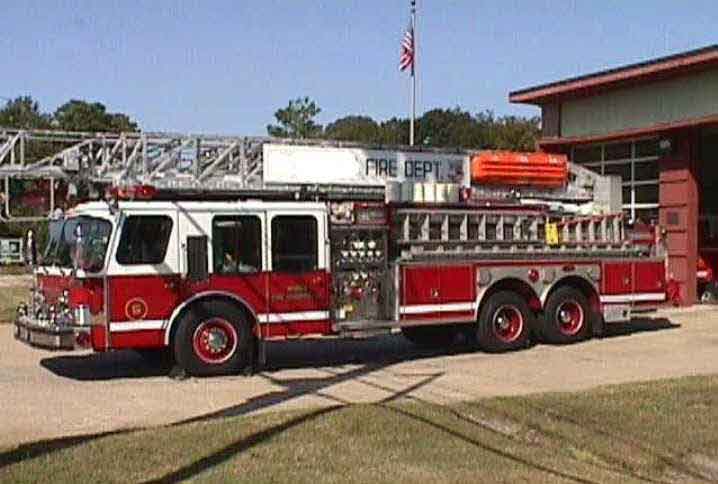
Ladder Truck Involved in Incident
INTRODUCTION
On September 27, 2000, a 33-year-old male career fire fighter died from injuries sustained while trying to board a ladder truck en route to a motor vehicle incident. On September 28, 2000, the U.S. Fire Administration notified the National Institute for Occupational Safety and Health (NIOSH) of this incident. On October 24, 2000, a safety and occupational health specialist, and the team leader from the NIOSH Fire Fighter Fatality Investigation and Prevention Program, investigated the incident. Meetings and interviews were conducted with the Chief and members of the fire department involved in the incident who responded to provide aid, local representatives of the International Association of Fire Fighters (IAFF), and a representative of the Progressive Black Fire Fighters Organization. The investigators visited the incident site and photographed the truck. They obtained copies of the police and forensic reports and the death certificate. The victim’s training records and the department’s standard operating procedures (SOPs) were reviewed. The career fire department involved in this incident has 20 fire stations and serves a population of 270,000 in a geographical area of 221 square miles. The career department is comprised of 450 uniformed career fire fighters. The truck involved in this incident was a 1988 E-One Stratosphere 80-foot aerial ladder truck. The gross vehicle weight of the tandem-axle truck was approximately 58,000 lbs. A fully enclosed, four-door crew cab provided seatbelt-equipped seating positions for up to seven passengers, including the driver. The front area of the cab was accessed through the front pair of doors, which accommodated three passengers, including the driver. The jump-seat area was accessed through a pair of rear doors, which accommodated four passengers, two behind the driver and two behind the officer’s seat. A metal wall with a sliding glass partition separated the jump seat area from the front cab area, and a large insulated engine cover separated the left-side and right-side jump seats. The weather at the time of the incident was clear and the temperature was approximately 72°F. The driver had a basic and current Class D driver’s license. The state does not require a commercial driver’s license for persons operating emergency vehicles or apparatus. The roadway where the incident occurred is known to have congested traffic during certain times of the day. The incident occurred during a busy time with significant traffic congestion. The roadway consisted of six traffic lanes which run east and west. Three lanes are designated for eastbound traffic and three lanes are designated for westbound traffic. There is a cement median which divides the opposing traffic lanes. The area is populated with several businesses, and there is artificial lighting in the area. The roadway had a posted speed limit of 45 mph. The State of Alabama has mandatory training requirements of 320 training hours to be a career fire fighter. The victim had completed over 320 hours of various fire and rescue training courses. The department’s qualifications to become a fire fighter exceed the state’s training requirements. The driver has been driving for the department for over 20 years, 10 of those years as a driver for Truck 5. The victim had 4½ years experience with the department.
INVESTIGATION
On September 27, 2000, at 1808 hours, the fire department was notified by Central Dispatch of a motor vehicle incident involving two vehicles, with injuries and a possible entrapment. The driver, a fire fighter and the victim were in the kitchen area of the station. Note: The victim was working an overtime shift and was not with his regularly assigned company. He had completed a 24-hour scheduled shift at his regular company on the day prior to this incident at approximately 0715 hours and reported to his overtime shift at approximately 0745 hours. The driver, fire fighter, and the victim exited the kitchen to the station’s bay area. The driver stopped and looked quickly at the map board and then got in and started Ladder Truck 5 (see Photo 1). The fire fighter told the victim he would run to the back of the station, approximately 100 feet, to notify the Captain, who was outside the station. The victim continued walking to his assigned side of the truck, which was located behind the driver (see Figure 1). Note: Through interviews conducted it was reported that when the victim reported for duty, the Captain met with him and briefed him on his duties with Truck 5. The Captain also assigned him his riding position, and the victim placed some of his turnout gear (helmet, coat, hood, gloves) inside the jump-seat cab area. It is the assumption that he placed his turnout pants and boots on the floor in the bay area of the station below the jump seat. The jump-seat doors were left open, as was normal practice on Truck 5, shift-B. The driver activated the lights and sounded the air horns to let the Captain know that the truck was ready to leave. At 1809 hours, the driver radioed to Fire Alarm that Truck 5 was responding to the call. The fire fighter made his way back to the truck, donned some of his gear, and boarded the jump seat facing forward on the Captain’s side. Note: The fire fighter could not see if the victim was on board, due to the height of the engine cover that separated the jump seats. The Captain boarded the truck and reached for the radio. The driver informed the Captain that he had already radioed in to Fire Alarm. The driver stated that he had heard both jump-seat doors close and he checked his rear view mirrors. Both jump-seat doors were in the closed position when the truck left the station. At approximately 1810 hours with lights and sirens activated, the truck exited the station bay. The truck made its way down the station’s driveway apron and briefly paused waiting for the westbound traffic to clear (see Photo 2). Upon traffic clearance the driver drove the truck across the three westbound traffic lanes and made a left turn into an inside eastbound-turn lane to get around the traffic (see Diagram 1). Note: According to several civilian witnesses’ statements, during this time the victim was running beside the driver’s side jump-seat door while trying to catch up to the truck. As reported by witnesses, the victim grasped the hand-grab bar with his right hand and opened the driver’s side jump-seat door with his left hand as he ran beside the truck, while making several attempts to board (see Photo 3). The truck accelerated after making the left turn. Note: The police estimated the speed of the truck to be approximately 25 mph. With the turning lane ending at the upcoming intersection, the driver looked into the rear view mirror on the Captain’s side as he made a right turn to merge the truck into the center lane. Note: According to witnesses’ statements, at this point the victim made his final attempt to board the truck. It was reported that as the victim lost his grip and footing, he fell onto the roadway. The victim was then run over by the truck’s left rear outside dual tandem wheels. At approximately this time, all three personnel on the truck felt a “thump” and thought they had been hit by another vehicle. The driver looked in the rear view mirrors and saw the victim lying on the roadway. The driver told the Captain that the victim had fallen out of the truck. The driver stopped the truck and the Captain and the fire fighter exited the truck and made their way back to the victim. They found him lying approximately 25 feet from the truck in a supine (on his back, face up) position. Note: Truck 5 traveled approximately 399 feet from the bay door of the station to the estimated point of impact with the victim. The victim at the time of the incident was wearing turnout pants and boots. At 1811 hours the Captain radioed to Central Dispatch to request assistance at his location. The fire fighter did a quick assessment of the victim, which revealed that he had been run over by the wheels of the truck and as a result was in traumatic cardiac arrest. The fire fighter grabbed a first aid kit from the truck and begin cardiopulmonary resuscitation (CPR) on the victim. At 1811 hours, Rescue 18 was dispatched and responded with a driver and firefighter/medic on board. Engine 22 responded to the scene with a driver, a Captain, a fire fighter and a fire fighter/medic. Assistance from several civilian medical personnel on the scene aided the fire fighter in providing CPR to the victim. Rescue 18 arrived on the scene at 1816 hours, followed by Engine 22, arriving at 1818 hours. Personnel on Rescue 18 began advanced life support on the victim as they prepared him for transport. At 1824 hours, Rescue 18 personnel, along with fire fighters from Truck 5 and Engine 22, transported the victim in Rescue 18 to the hospital, which was approximately 2 miles from the scene. At 1831 hours, Rescue 18 arrived at the hospital. The victim was pronounced dead at 1839 hours at the hospital.
CAUSE OF DEATH
The death certificate lists the cause of death as multiple blunt force injuries.
RECOMMENDATIONS/DISCUSSION
Recommendation #1: Fire departments should ensure that fire fighters do not attempt to board moving fire and emergency apparatus.1
At the fire station, responding fire fighters should quickly assemble on the apparatus floor near the vehicle and don protective clothing, and mount the apparatus while it is stationary. Jumping onto or off moving apparatus is inherently dangerous. If the fire fighter misses the step of the moving fire or emergency apparatus, as was the case with this incident, and falls to the roadway, chances are great that the rear wheels will run over the fire fighter before the driver can stop the vehicle.
Recommendation #2: Fire departments should ensure that the department’s standard operating procedures (SOPs) are followed and refresher training is provided.2,3,4
It is imperative that companies perform their duties as described in the standard operating procedures (SOPs) unless directed or approved by the incident command system to do otherwise.
- Confirmation to Central Dispatch of company response. Standard procedures detail specific actions a responding company must take to properly report the response to an emergency. These procedures state that the responding companies, within 60 seconds of dispatch by Fire Alarm, acknowledge receipt of the alarm and respond in the following manner: address “Fire Alarm” and report the company number, response location, and the total number of persons responding on the unit. At 1808 hours, Truck 5 confirmed to Fire Alarm its response, however did not include a report of the number of persons on board.
- Procedures for exiting quarters under all conditions state that (1) the company officer will station a guide person outside the overhead door who will signal to the apparatus driver that the door is fully open and stationary, (2) apparatus will then proceed from quarters, (3) a guide person will signal to the driver when the apparatus is clear of the door, at which time the driver will stop the apparatus, (4) a guide person will close the overhead door by using the wall controls, (5) a guide person, if part of the company, will then board the apparatus, which may proceed.
Recommendation #3: Fire departments should ensure that personnel on board emergency and fire apparatus are seated, belted, and accounted for, prior to movement.1,3,5
All of the riders on the apparatus should be seated within the cab or body of the emergency or fire apparatus and should be wearing their seat belts before the vehicle is put into motion. The officer (Captain) must always be assured that all fire fighters are properly and safely boarded before giving the order to proceed (i.e., visual contact, verbal contact, or giving personal accountability tags to the officer once on board). At the time of the incident, the fire fighter seated in the jump seat behind the Captain could not see if the victim was on board in the other jump seat because his vision was obstructed by the engine cover on the truck.
REFERENCES
1. Dunn V [1992]. Safety and survival on the fireground. Tulsa, OK: PennWell.
2. Alabama Fire Department. Standard Operating Procedures (SOPs).
3. National Fire Protection Association [1997]. NFPA 1500, Standard on fire department occupational safety and health program. Quincy, MA: National Fire Protection Association.
4. Cook JL, Jr [1998]. Standard operating procedures and guidelines. Saddle Brook, NJ: Fire Engineering Books and Videos.
5. International Fire Service Training Association [1998]. Fire department pumping apparatus. 7th Edition, OK: Oklahoma Sate University, Fire Protection Publications.
INVESTIGATOR INFORMATION
This incident was investigated by Nancy T. Romano, Safety and Occupational Health Specialist, and Richard W. Braddee, Team Leader/Project Officer, NIOSH, Division of Safety Research, Surveillance and Field Investigations Branch.

Photo 1. Ladder Truck Involved in Incident
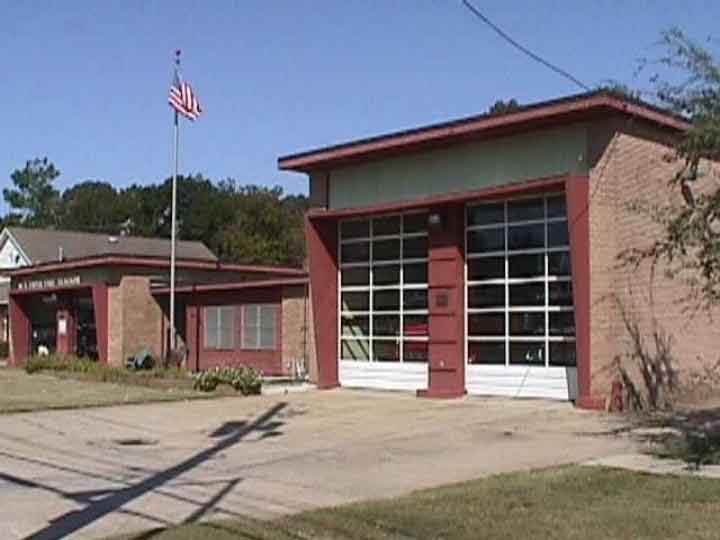
Photo 2. Station’s Driveway Apron
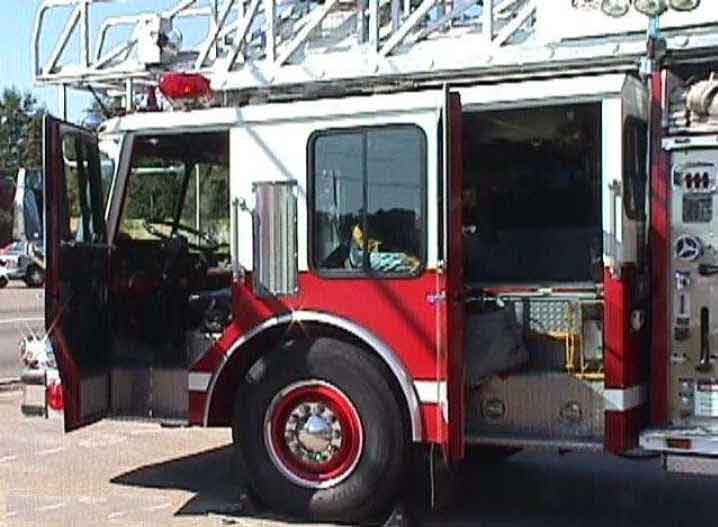
Photo 3. Jump-Seat Door That Victim Was Attempting to Board
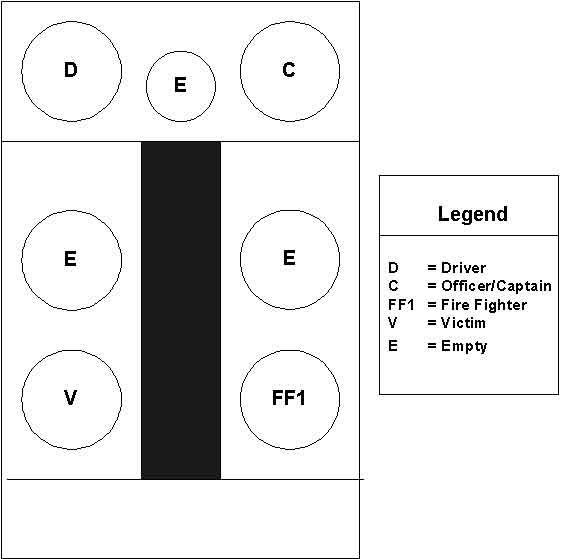
Figure. Assigned Riding Positions on Ladder Truck
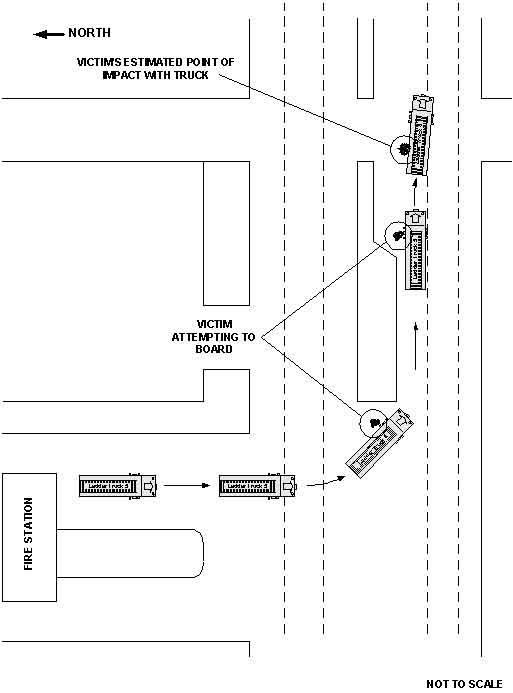
Diagram. Aerial view of the incident site, showing the two positions of the ladder truck when the victim attempted to board and the approximate point of impact of the victim with the truck.
This page was last updated on 11/21/05
